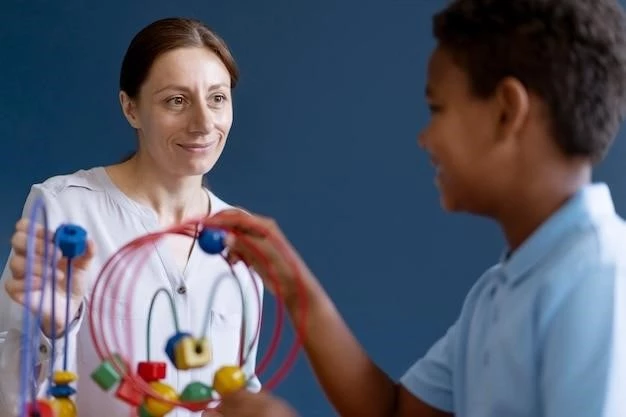Overview of Rett-like Syndrome
Rett syndrome is a genetic disorder primarily affecting females and manifests around 6-18 months of age.
It presents with symptoms like slowed head growth, abnormal hand movements, and loss of social interaction.
While Rett syndrome shortens lifespan, life expectancy varies based on symptom onset and severity.
Other disorders on the spectrum include PPM-X syndrome and MECP2-related severe neonatal encephalopathy.
Definition and Genetic Basis
Rett syndrome, a rare neurodevelopmental disorder, mainly affects females and typically manifests between 6-18 months of age.
It is primarily associated with mutations in the MECP2 gene, leading to symptoms such as developmental regression and severe disability.
Unlike classic Rett syndrome, atypical Rett-like phenotypes may present with varying severity in individuals.
Distinction from Classic Rett Syndrome
Unlike classic Rett syndrome, Rett-like syndrome may present with a broader clinical spectrum, showing variations in symptom presentation and severity.
Individuals with Rett-like syndrome may exhibit atypical features that distinguish this condition from classic Rett syndrome.
Genetic mutations in MECP2 may play a role in both classic Rett syndrome and Rett-like syndrome, contributing to their similarities and differences.

Symptoms and Clinical Presentation
Rett syndrome typically presents with symptoms such as slowed head growth, abnormal hand movements, and loss of social interaction.
The manifestation of symptoms can vary in severity, with individuals potentially experiencing a range of clinical presentations.
Other common symptoms include hyperventilating, screaming, movement issues, coordination problems, and communication difficulties.
Early Signs and Manifestations
Rett syndrome typically manifests in affected individuals with symptoms like slowed head growth, abnormal hand movements, and a loss of social interaction.
Other early signs may include hyperventilation, uncontrolled hand movements, difficulties with movement and coordination, and possible regression in development.
It primarily affects females, with symptom onset often occurring between 6-18 months of age, leading to challenges in motor and cognitive functions;
Variability in Symptom Severity
The severity of symptoms in Rett-like syndrome can vary significantly among individuals, leading to a wide spectrum of clinical manifestations.
Factors such as genetic variations and environmental influences may contribute to the variability in symptom presentation and progression.
Individuals with Rett-like syndrome may experience mild to severe symptoms affecting various aspects of their neurological and physical health.
Diagnosis and Prognosis
Rett syndrome is primarily diagnosed based on clinical symptoms and genetic testing to identify mutations in the MECP2 gene.
The prognosis of individuals with Rett syndrome varies depending on the onset of symptoms and their severity.
While Rett syndrome is associated with a shortened lifespan, advances in care have improved quality of life and increased survival rates.
Diagnostic Criteria for Rett-like Syndrome
The diagnosis of Rett-like syndrome involves identifying specific clinical symptoms and genetic testing, particularly for mutations in genes such as MECP2.
Diagnostic criteria may include regression in development, loss of acquired skills, characteristic hand movements, and impaired social interaction.
A comprehensive evaluation by healthcare professionals is essential to differentiate Rett-like syndrome from other neurodevelopmental disorders.
Life Expectancy and Disease Progression
Rett syndrome’s impact on life expectancy varies based on the age of symptom onset and their severity. While it generally shortens lifespan, many individuals with Rett syndrome survive into their 40s or 50s due to improved care and management strategies.
The progression of the disease involves a spectrum of symptoms, which can range from mild to severe, affecting aspects such as motor skills, communication, and daily functioning.
Advancements in treatment and supportive care have contributed to enhancing the quality of life and extending survival rates for individuals with Rett syndrome.

Treatment Approaches and Therapies
Treatment for Rett-like syndrome focuses on symptom management through therapies such as physical, occupational, and speech therapy.
Current approaches aim to improve motor skills, communication, and overall quality of life for individuals living with Rett-like syndrome.
Research on emerging therapies, including genetic and pharmaceutical interventions, continues to advance the treatment options available.
Current Treatment Options
Existing treatment strategies for Rett-like syndrome primarily focus on therapies such as physical, occupational, and speech therapy to address specific symptoms and enhance overall quality of life.
These interventions aim to improve motor skills, communication abilities, and emotional well-being in individuals with Rett-like syndrome.
While current treatments are largely symptomatic and supportive, ongoing research explores potential advancements in management and care approaches.
Emerging Therapies and Research Developments
Ongoing research in Rett-like syndrome focuses on exploring emerging therapies such as genetic interventions and pharmaceutical approaches.
Advancements aim to address the fundamental genetic causes of the condition and develop targeted treatments for symptom management and potential disease modification.
The field is actively investigating innovative strategies to enhance the therapeutic options available for individuals with Rett-like syndrome.
Relationship to Other Neurodevelopmental Disorders
Rett-like syndrome is part of a spectrum of disorders associated with overlapping genetic causes, including PPM-X syndrome and MECP2-related conditions.
Comparison with related disorders like MECP2-related severe neonatal encephalopathy highlights the diversity within this group of neurodevelopmental conditions.
This spectrum underscores the complexity of genetic influences and clinical manifestations across different disorders related to Rett-like syndrome.
Spectrum of Disorders Associated with Rett-like Syndrome
Rett-like syndrome shares genetic causes with disorders like PPM-X syndrome, MECP2 duplication syndrome, and MECP2-related severe neonatal encephalopathy.
This spectrum of disorders highlights the genetic complexity and clinical variability within conditions related to Rett-like syndrome.
Understanding these associated disorders is crucial for accurate diagnosis and individualized management approaches for affected individuals;
Comparison with Related Conditions like MECP2-related Disorders
Rett-like syndrome is distinguished from MECP2-related disorders by its varied clinical presentation and symptom severity.
While both conditions share genetic causes, differences in manifestation highlight the complexity of neurodevelopmental disorders.
Understanding these distinctions is crucial for tailored interventions and management strategies for affected individuals.
Future Perspectives and Awareness Efforts
Ongoing research aims to enhance treatments for Rett-like syndrome, exploring genetic interventions and novel therapies.
Awareness efforts focus on improving understanding, diagnosis, and support networks for individuals affected by Rett-like syndrome.
Advances in care and advocacy initiatives contribute to a better quality of life and increased awareness of Rett-like syndrome.
Advances in Understanding Rett-like Syndrome
Ongoing research efforts aim to deepen the understanding of Rett-like syndrome’s genetic underpinnings and clinical manifestations.
Advancements in genomic studies and disease modeling techniques contribute to elucidating the complexity of Rett-like syndrome.
Enhanced insights into the molecular mechanisms involved offer potential avenues for targeted therapies and tailored interventions.
Support Networks and Advocacy for Individuals with Rett-like Syndrome
Support networks and advocacy groups play a crucial role in providing resources, information, and emotional support to individuals and families affected by Rett-like syndrome.
These networks aim to raise awareness, promote research, and empower the community to enhance the quality of life and outcomes for individuals with Rett-like syndrome.
Collaboration between healthcare providers, researchers, and advocacy organizations is essential for fostering a supportive environment for individuals living with Rett-like syndrome.
